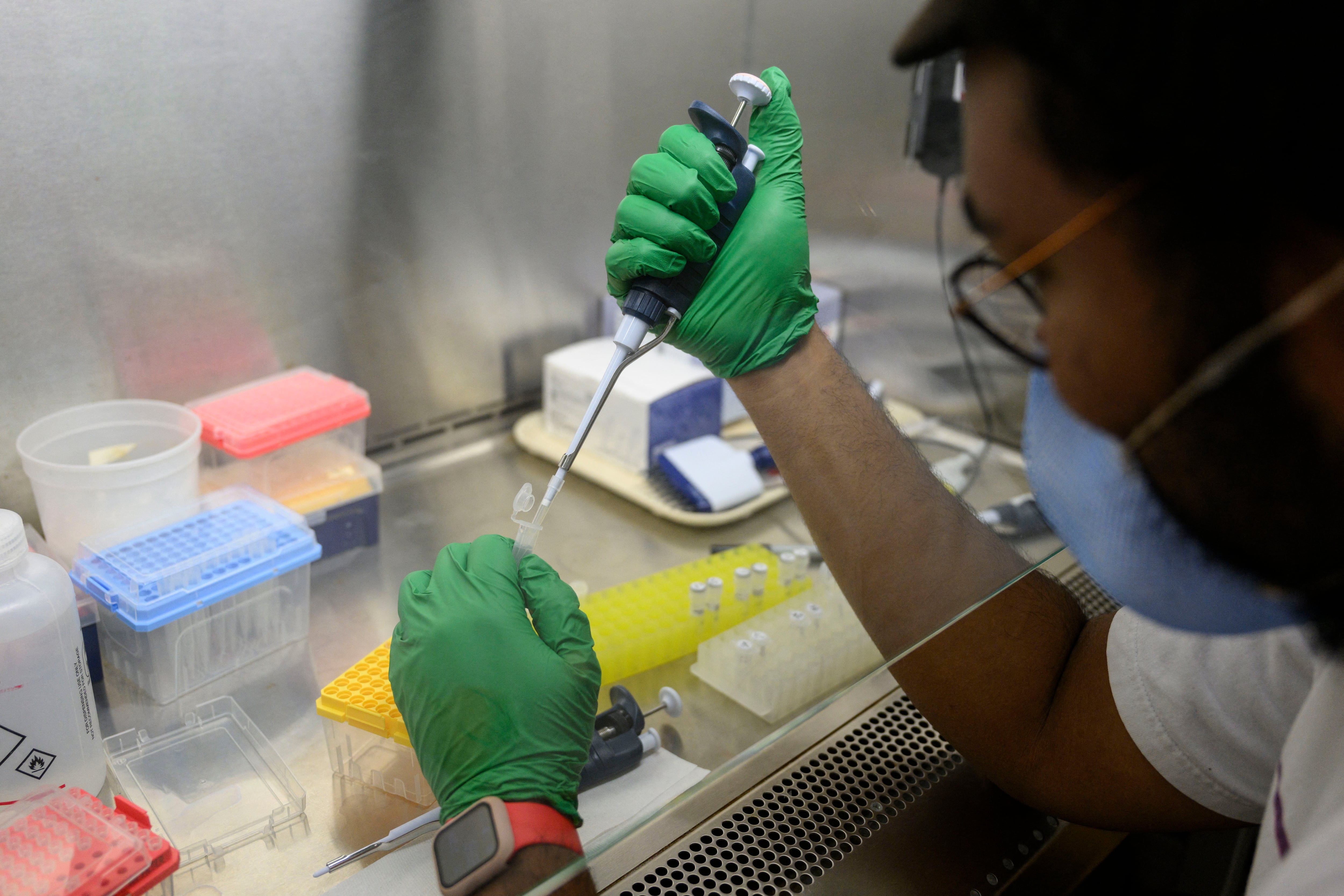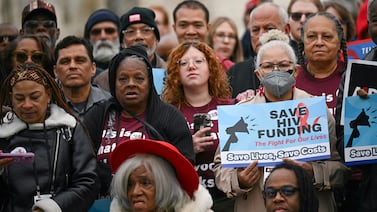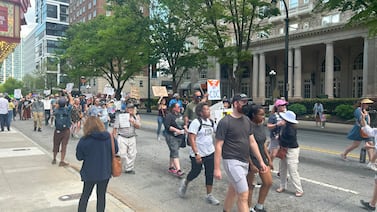Sign up for Your Local Epidemiologist New York and get Dr. Marisa Donnelly’s community public health forecast in your inbox a day early.
Federal changes are happening at lightning speed, and while they may seem high-level or far away, they can have direct and indirect impacts on New Yorkers' health — some in the short term, and definitely in the long term if courts don’t intervene.
In the past week, three have caught my eye for New Yorkers.
Real-world impacts of federal chaos for New Yorkers
With the executive orders, there are already short-term impacts to service programs in New York.

Your Local Epidemiologist (National) surveyed readers to collect insights on the personal and organizational impacts of federal changes. More than 3,000 people from 50 states, 3 territories, and several countries shared their first-hand experiences. (The survey is still open if you would like to contribute, and the full results so far are available here.)
New York was well-represented, with 58 respondents.
New Yorkers reported that the federal changes have impacted them and their organizations in various ways, like:
- Funding for programs, including providing basic services (e.g., shelter, food, health care, safety), education, and workforce development. Almost half reported that funding was delayed, and about a third reported funding was cut.
- Morale, with 2 of 3 respondents severely impacted.
- Lost jobs or projects canceled altogether, threatened, or delayed.
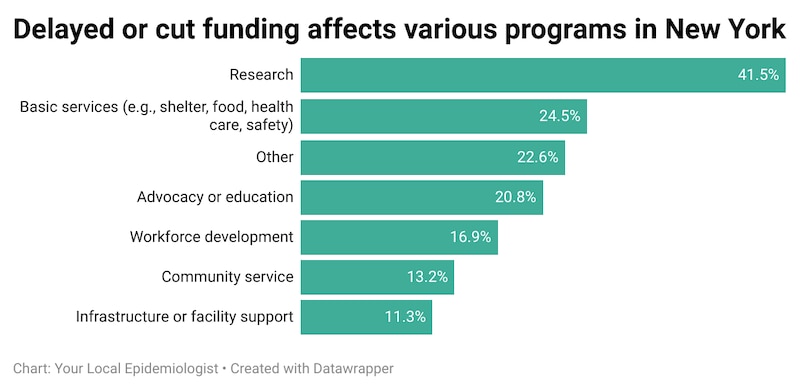
This is especially concerning when we consider the groups they serve: 44% work with youth and adolescents, 37% with Black, Indigenous, and people of color, 35% with families, and 33% with infants and children.
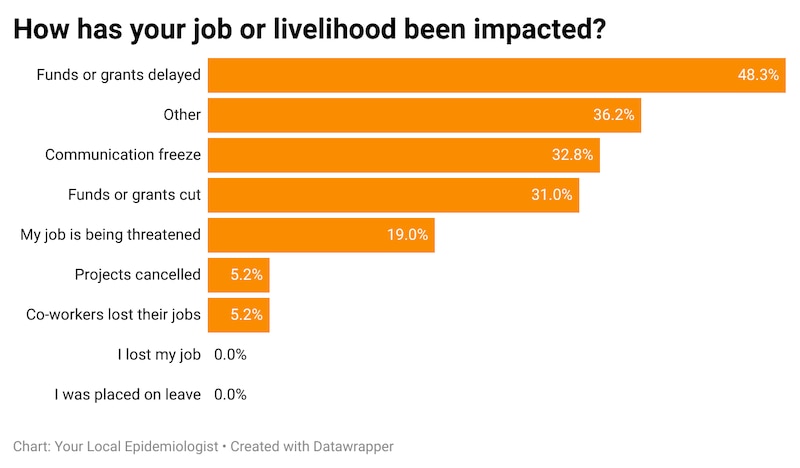
This survey makes one thing clear: Federal funding shifts and stop-work orders are impacting essential health programs across New York. These impacts to local communities directly result from policy and funding decisions being made at the highest level of government. The truth is, with an incoming Health and Human Services secretary and other federal health directors, new priorities in health funding are about to take shape, and we can expect more changes.
NIH limits overhead expenses to 15%
The new administration announced Friday that the National Institutes of Health would have a new “indirect costs” rate of 15%. Almost immediately, 22 states including New York filed a lawsuit challenging this rate. If the new rate is upheld in the courts, it will impact the New York economy, jobs, and innovation.
Indirect costs are also known as facilities and administration costs — money to keep research institutions running, through maintaining laboratories, heating and electricity, and providing administrative support, for example. When a researcher gets an NIH grant, say a $100,000 grant, the indirect rate is added to that, so 15% would be $115,000. Capping these funds at 15% is a big change — the current average indirect cost for universities is 30%, twice as much as the proposed cap. And many institutions, like research hospitals, rely on indirect expenses as high as 60-75%.
This big change would require universities to cut in other places, such as:
- Internal budget cuts, like with hiring freezes
- Limiting research volume
- Higher tuition
- Delayed or canceled infrastructure updates
Columbia, New York University, and Mount Sinai are among the top 20 NIH-funded institutions nationally. In New York, research institutions receive about $3.6 billion in NIH awards, supporting more than 29,000 jobs and almost $8 billion in economic activity in the state. These funds support crucial research into diseases like cancer, Alzheimer’s, obesity, Long Covid, and more.
These funding cuts aren’t happening in isolation but are reflecting shifts in federal health priorities, many of which are shaped by the leadership at the Department of Health and Human Services.
The HHS secretary heavily influences what gets funded
Until recently most of us may not have given a lot of thought to the secretary of HHS. In fact, I wasn’t all that clear about how big their influence is. Here’s what I learned, and why it matters who’s in that post.
The U.S. Senate is expected to vote (potentially as early as Wednesday) on the confirmation of Robert F. Kennedy Jr. as the incoming HHS secretary — a federal position overseeing many federal health agencies, including the Centers for Disease Control and Prevention, the NIH, and the Food and Drug Administration. An incoming HHS secretary typically pushes for a new agenda, prioritizing topics based on their policy goals. This shapes federal, state, and local public health funding. Large portions of New York’s public health budget depend on federal funds (especially for infectious disease surveillance, AIDS treatment and care, and Medicare services), so changes to federal health priorities will be felt by our state’s public health programs.
The budget for New York City’s Department of Health and Mental Hygiene, for example, relies on federal funding for about 17% of its $1.9 billion budget in 2025. Some budget cuts and fluctuations are expected. For example, from 2024 to 2025, the federal funds for infectious disease work in New York City were cut by $32.2 million. Large changes in priorities, however, will likely result in larger budget cuts. Combined with proposed cuts to NIH-funded research institutions, cuts to other organizations in New York that rely on federal funding will compound, limiting our collective resources to respond to public health threats in our state.
So, what can we do?
- Contact your representatives. Call your senators and congressional representatives to advocate for the issues that matter to you. (Find their contact information here.)
- Support local organizations. Volunteer, donate, or simply show appreciation for community groups working on the ground.
- Share your stories with your community, YLE through our survey, your representatives, or via social media. Federal policy may feel distant, but personal stories from neighbors, friends, or colleagues bring its impact to life. Putting human faces to policy changes helps build awareness and keeps our legislators accountable.
- Support one another. With so many changes, people may be worried about losing essential health services, facing layoffs, or feeling overwhelmed by the news. We need each other’s support and empathy right now.
Bottom line
There is a lot of change coming to federal institutions, and some will affect New York. Some people agree with these changes, some do not. But none of us are going through these changes alone, and when we lean on each other, we can help keep our communities strong.
Love,
Your Local Epidemiologist
Dr. Marisa Donnelly, a senior epidemiologist with wastewater monitoring company Biobot Analytics, has worked in applied public health for over a decade, specializing in infectious diseases and emerging public health threats. She holds a PhD in epidemiology and has led multiple outbreak investigations, including at the California Department of Public Health and as an Epidemic Intelligence Service Officer at the Centers for Disease Control and Prevention. Marisa has conducted research in Peru, focusing on dengue and Zika viruses and the mosquitoes that spread them. She is Healthbeat’s contributing epidemiologist for New York in partnership with Your Local Epidemiologist, a Healthbeat supporter. She lives in New York City. Marisa can be reached at mdonnelly@healthbeat.org.

